- JST Home
- /
- Strategic Basic Research Programs
- /
 ACT-X
ACT-X- /
- Research Director/
- Cyberinfrastructure for AI empowered society/
- [Cyberinfrastructure] Year Started : 2024
[Cyberinfrastructure] Year Started : 2024
Masahiro Ishii
Development of a Classification System for Encrypted Mixed Traffic
Grant No.:JPMJAX24M1
Researcher
Masahiro Ishii
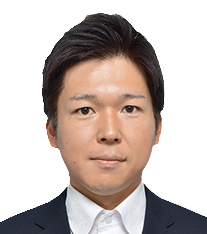
Assistant Professor
Center for Information Infrastructure
Institute of Science Tokyo
Outline
It is not easy to detect malicious communications related to cyber security threats because almost all traffic observed within an organization is encrypted. This research analyzes and classifies encrypted data in mixed traffic, where multiple communication channels (streams) are mixed or multiplexed, such as encrypted VPN tunnels. In addition, we develop a system with automated functions to generate datasets for various encrypted communications and to analyze encrypted traffic features to enhance the classification model.
Takumasa Ishioka
Development of a Zero-Latency Cooperative Control System for Autonomous Vehicles
Grant No.:JPMJAX24M2
Researcher
Takumasa Ishioka
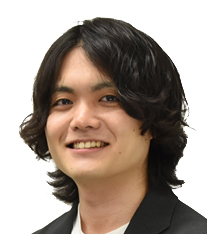
Assistant Professor
Faculty of Engineering
Kyoto Tachibana University
Outline
This study investigates the possibility of implementing cooperative control systems to overcome propagation delays. It develops cloud-based sensor data prediction technology to propose and evaluate a zero-latency cooperative control system for autonomous vehicles. This research focuses on V2X cooperative control, behavior selection algorithms utilizing predictive data, and establishing cooperative systems between autonomous vehicles. Based on the proposed system, a sensor network within an advanced simulation environment will be created to validate sensor data processing and its impact on prediction accuracy.
Mai Kamihori
Development of a Texture Transmission System Using Cross-Modal Technology
Grant No.:JPMJAX24M3
Researcher
Mai Kamihori

Ph.D. student
Graduate School of Science and Engineering
Aoyama Gakuin University
Outline
This project proposes a technological framework for converting the sensory experience of eating (texture) into another sensory modality for transmission and sharing. First, the study aims to evaluate texture quantitatively by combining subjective assessments from diners with sensing and analysis from an affective perspective. Subsequently, through evaluation experiments, I aim to control texture using various sensory presentations and establish methods for presenting arbitrary textures via cross-modal perception. Ultimately, this project seeks to create novel eating experiences.
Hiroki Kuzuno
Research on secure fundamental software with attack resistance
Grant No.:JPMJAX24M4
Researcher
Hiroki Kuzuno

Associate Professor
Graduate School of Engineering
Kobe University
Outline
It is necessary to research and develop a secure system for cyber infrastructure. Operating systems (OSes) are essential software components to strengthen cyber resilience and safe operations to tackle cyber attacks. This research aims to build secure fundamental software that prevents the execution of vulnerability-based attacks. It enhances the OS kernels to equip attack resistance to mitigate privilege escalation attacks and denial-of-service attacks.
Takuma Kuno
Development of High-capacity Datacenter Optical Networks
Grant No.:JPMJAX24M5
Researcher
Takuma Kuno
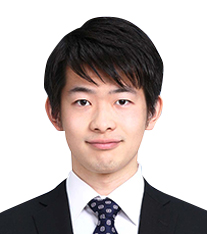
Assistant Professor
Graduate School of Engineering
Nagoya University
Outline
Power consumption in datacenter networks must be reduced due to the rapid increase in datacenter traffic. Typical datacenter networks use electrical switches, even though transmission links consist of optical fibers. Consequently, power-intensive signal conversion between optical and electrical domains is necessary. In this context, the introduction of optical switches into datacenter networks is an attractive approach for reducing power consumption because optical switches eliminate the need for the power-consuming signal conversion. This research proposes a high-capacity and highly scalable optical switch architecture designed for datacenter networks.
Keichi Takahashi
A distributed scientific data exchange for exploratory data analysis
Grant No.:JPMJAX24M6
Researcher
Keichi Takahashi
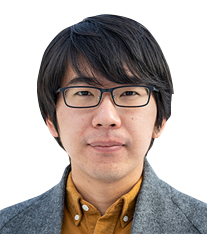
Associate Professor
D3 Center
The University of Osaka
Outline
Scientific data infrastructures for inter-site transfer and researcher collaboration have traditionally been file-based. However, this approach often fails to meet the requirements of exploratory and interactive data analysis. For example, researchers must transfer entire files even when they only need to analyze specific portions or when reduced-quality data would suffice for preliminary exploration. This project aims to develop the key technologies for a distributed scientific data exchange system that enables efficient, on-demand data transfer across computing resources, with adaptive quality and resolution to match diverse analytical needs.
Shoma Tanaka
Multi-Agent Systems Utilizing Interactions of Physical Phenomena
Grant No.:JPMJAX24M7
Researcher
Shoma Tanaka

First-year Ph.D. student
School of Engineering
Institute of Science Tokyo
Outline
In conventional multi-agent systems, robot agents have operated based on computations from control mechanisms using sensory information. This research aims to replace the entire process from sensing to actuation with a system of interacting self-oscillating actuators. Through this approach, we endeavor to construct a platform for next-generation multi-agent systems that utilizes interactions between robots and the environment through physical phenomena.
Naoki Tamura
Integrated Utilization of Multimodal Urban Data via Common Latent Space
Grant No.:JPMJAX24M8
Researcher
Naoki Tamura
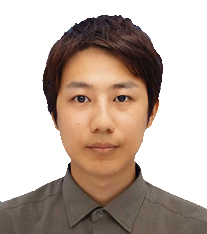
Student
Graduate School of Engineering
Nagoya University
Outline
Understanding the characteristics of different areas in a city is crucial for a wide range of applications, including urban planning, commercial area analysis, tourism strategies, and infection control. Although many methods have been developed to embed area features into latent spaces for better organization and analysis, there has been little effort to comprehensively handle multimodal area data. This study proposes a novel method that embeds multiple area modalities into a common latent space, enabling the integrated utilization of area data across different modalities.
Taishi Nakai
Mathematical Analysis of Blockchain for Cyber Infrastructure
Grant No.:JPMJAX24M9
Researcher
Taishi Nakai

1st year Ph.D. cource student
graduate school of informatics
Kyoto University
Outline
This study aims to establish a blockchain as CI (Cyber Infrastructure) by mathematically analyzing the blockchain trilemma beyond the conditions under which the trilemma formula for PoW was derived, which serves as a preliminary finding. Based on the results, we aim to overcome the limitations of the trilemma and achieve a blockchain that can scale processing performance indefinitely without compromising security and decentralization.
Daisuke Hisano
Development of Task-Oriented Communication Systems Cooperating with AI
Grant No.:JPMJAX24MA
Researcher
Daisuke Hisano

Assistant Professor
Graduate School of Engineering
The University of Osaka
Outline
I conduct research on semantic communication that communicates not only bit information but also the intent and meaning of the information source. Specifically, I will accelerate the application of deep joint source-channel coding (DeepJSCC) using deep learning to underwater acoustic communication and optical fiber communication. As a future technology that further develops DeepJSCC for 5G cellular communications, which the applicant has been working on, DeepJSCCE, which incorporates an equalization function into DeepJSCC, will be studied.
Hiroaki Murakami
Creation of Next-Generation Indoor Positioning System Based on Multipath Reflections Towards Spatial Context-Aware AI
Grant No.:JPMJAX24MB
Researcher
Hiroaki Murakami
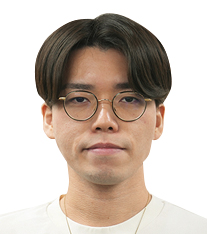
Project assistant professor
Graduate School of Engineering
The University of Tokyo
Outline
The purpose of this research is to develop next-generation indoor positioning technology that operates with high accuracy and robustness, enabling the deployment of indoor positioning systems as cyber infrastructure. This will lay the foundation for a new era in which AI provides information and interactions tailored to the user’s “spatial context.” In this research, we focus on multipath reflections occurring within indoor environments, aiming to achieve both high positioning accuracy and robustness against obstacles—an accomplishment that has been challenging with conventional indoor positioning technologies.













